第18章 LETTER III(4)
The public buildings and temples, though they bear magnificent names, are extremely ugly, and are the subjects of slow but manifest decay, while the streets of shops exceed in picturesqueness everything I have ever seen. Much of this is given by the perpendicular sign boards, fixed or hanging, upon which are painted on an appropriate background immense Chinese characters in gold, vermilion, or black. Two or three of these belong to each shop, and set forth its name and the nature of the goods which are to be purchased at it. The effect of these boards as the sun's rays fall upon them here and there is fascinating. The interiors of the shops are lofty, glass lamps hang from the ceilings and large lanterns above every door, and both are painted in bright colors, with the characters signifying happiness, or with birds, butterflies, flowers, or landscapes. The shop wall which faces the door invariably has upon it a gigantic fresco or portrait of the tutelary god of the building, or a sheet of red paper on which the characters forming his name are placed, or the character Shan, which implies all gods, and these and the altars below are seen from the street. There is a recess outside each shop, and at dusk the joss-sticks burning in these fill the city with the fragrance of incense.
As there are streets of shops and trades, so there are streets of dwelling-houses, but even the finest of these present a miserable appearance to the passers-by, for all one can see is a lofty and dimly-lighted stone vestibule, furnished with carved ebony chairs with marble seats and backs, and not infrequently with gigantic coffins placed on end, the gift of pious juniors to their seniors! A porter stands in this vestibule ready to open the lofty triple gate which admits to the courtyard of the interior. Many Chinese mansions contain six or seven courtyards, each with its colonnade, drawing, dining, and reception rooms, and at the back of all there is a flower garden adorned with rockeries, fish-ponds, dwarf trees, and miniature pagodas and bridges.
The streets in which the poor dwell are formed of low, small, dark, and dirty houses, of two or three rooms each. The streets of dwellings are as mean and ugly as those of shops are brilliant and picturesque.
This is a meagre outline of what may be called the anatomy of this ancient city, which dates from the fourth century B.C., when it was walled only by a stockade of bamboo and mud, but was known by the name of "the martial city of the south," changed later into "the city of rams." At this date it has probably greater importance than it ever had, and no city but London impresses me so much with the idea of solid wealth and increasing prosperity.
My admiration and amazement never cease. I grudge the hours that I am obliged to spend in sleep; a week has gone like half a day, each hour heightening my impressions of the fascination and interest of Canton, and of the singular force and importance of the Chinese. Canton is intoxicating from its picturesqueness, color, novelty and movement. to-day I have been carried eighteen miles through and round it, reveling the whole time in its enchantments, and drinking for the first time of that water of which it may truly be said that who so drinks "shall thirst again"--true Orientalism. As we sat at mid-day at the five-storied pagoda, which from a corner of the outer wall overlooks the Tartar city, and ever since, through this crowded week, I have wished that the sun would stand still in the cloudless sky, and let me dream of gorgeous sunlight, light without heat, of narrow lanes rich in color, of the glints of sunlight on embroideries and cloth of gold, resplendent even in the darkness, of hurrying and colored crowds in the shadow, with the blue sky in narrow strips high above, of gorgeous marriage processions, and the "voice of the bridegroom and the voice of the bride," of glittering trains of mandarins, of funeral processions, with the wail of hired mourners clad in sackcloth and ashes, of the Tartar city with its pagodas, of the hills of graves, great cities of the dead outside the walls, fiery-red under the tropic blue, of the "potter's field" with its pools of blood and sacks of heads, and crosses for crucifixion, now, as on Calvary, symbolical of shame alone, of the wonderful river life, and all the busy, crowded, costumed hurry of the streets, where blue banners hanging here and there show that in those houses death has stilled some busy brains forevermore. And I should like to tell you of the Buddhist and Confucian temples; of the monastery garden, which is the original of the famous "Willow Pattern;" of the great Free Dispensary which is to rival that of the Medical Mission; of the asylums for lepers, foundlings, the blind, aged men and aged women, dating from the fourteenth to the seventeenth centuries, originally well conceived and noble institutions, but reduced into inefficiency and degradation by the greed and corruption of generations of officials; of the "Beggars' Square" and beggars' customs; of the trades, and of the shops with their splendors; of the Examination Hall with its streets numbering eleven thousand six hundred and seventy-three cells for the candidates for the literary honors which are the only road to office and distinction in China, but Canton deserves a volume, and Archdeacon Gray has written one!
I. L. B.